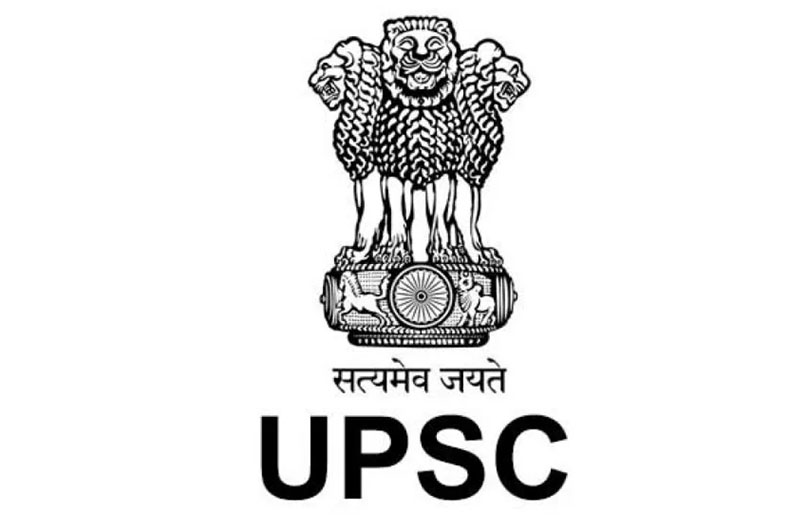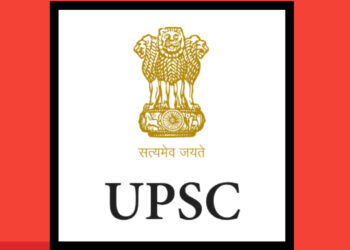Introduction
The process through which rural regions become urban and cities and towns expand is known as urbanization. One of the most important facets of world development in the last few centuries has been this phenomena, which is influenced by a number of social, economic, and political elements. India’s economic structure, social dynamics, and governance practices have all been significantly shaped by urbanization.
One of the main topics covered in UPSC Civil Services Examination (CSE) General Studies Paper 1 (GS Paper 1) is urbanization. The geography, society, history, and culture of India are the main topics of this essay. Because it touches on topics like population dynamics, the environment, sustainable development, and rural-urban migration, urbanization fits into this study.
Aspirants must have a thorough awareness of urbanization in order to fully appreciate both its advantages—such as increased infrastructure and economic growth—and disadvantages—such as social inequity, pollution, and overpopulation.
1. The Phenomenon of Urbanization: A Global and Indian Perspective
1.1. Defining Urbanization
The term “urbanization” describes the migration of people from rural to urban areas and the resulting expansion of urban settlements. Both societal structures (such as governance, employment, and education) and physical infrastructure (such as buildings, roads, and water systems) are changing as a result of this process. It frequently results in the development of new towns and cities as well as the growth of already-existing ones.
The percentage of individuals who live in urban areas as a percentage of the overall population is known as the urbanization rate. Urbanization has historically been associated with globalization, industrialization, and technical advancement; but, in the present era, it also stems from individuals moving in search of better living conditions, better employment prospects, and better healthcare.
1.2. Urbanization Trends in the World and India
Globally, urbanization has accelerated in the last century. In the early 1900s, less than 20% of the world’s population lived in urban areas. By 2020, that figure had risen to over 56%, with projections suggesting that nearly 68% of the global population will live in urban areas by 2050. The majority of this growth is expected in developing countries, where urban centers are rapidly expanding due to population growth and migration.
In India, urbanization has been progressing steadily since independence. According to the 2011 Census, about 31.2% of India’s population lived in urban areas. However, this figure is expected to rise significantly in the coming decades. Rapid urbanization in India is influenced by several factors:
- Industrialization and economic growth: As the Indian economy has grown, particularly in sectors like IT, manufacturing, and services, there has been a natural migration of people from rural areas to urban centers in search of better economic opportunities.
- Rural-urban migration: The search for better educational and healthcare facilities, as well as improved infrastructure, draws people to cities.
- Population pressure: India’s growing population contributes to increased urban expansion.

1.3. Urbanization and Its Impact on India
How To Approach Human Rights In UPSC GS Paper 2 Urbanization in India has had both positive and negative impacts, which must be understood by UPSC aspirants to address questions related to sustainable development, urban planning, and societal changes.
Positive Impacts:
- Economic growth: Cities are the engines of economic growth, offering job opportunities, better infrastructure, and access to resources. Urban areas contribute significantly to India’s GDP.
- Improved standards of living: Urbanization has led to better access to education, healthcare, and social services. It has improved living standards in terms of housing, sanitation, and other civic amenities.How To Approach Human Rights In UPSC GS Paper 2
- Technological and industrial development: Cities foster innovation and technological advancements, driving the economy forward.How To Approach Human Rights In UPSC GS Paper 2
Negative Impacts:
- Overpopulation and overcrowding: The rapid influx of people into urban areas can lead to overcrowded housing, slums, and strain on existing infrastructure.
- Environmental degradation: Urban growth often leads to environmental problems, including air pollution, water scarcity, and the loss of green spaces.
- Social inequality: Urban areas often witness stark divisions between the rich and poor, leading to social inequality. Informal settlements or slums may lack basic amenities, creating pockets of poverty.How To Approach Human Rights In UPSC GS Paper 2
- Health challenges: Overcrowded cities with limited healthcare facilities may struggle to cope with public health crises and diseases, particularly in slums or densely populated areas.
2. Urbanization and its Relation to Geography and Environment
How To Approach Human Rights In UPSC GS Paper 2 Answering problems in UPSC GS Paper 1’s Geography section requires an understanding of the interrelationships between urbanization, geography, and the environment.
2.1. The Role of Geography in Urbanization
How To Approach Human Rights In UPSC GS Paper 2 The patterns of urban growth are significantly influenced by geography. Cities’ locations are influenced by geographic variables like climate, natural resources, and proximity to bodies of water. Urban settlement growth has also been influenced by past trade routes, the availability of arable land, and the convenience of transportation.
How To Approach Human Rights In UPSC GS Paper 2 Major Indian cities like Delhi, Chennai, Kolkata, and Mumbai, for instance, are situated on important trade routes, next to rivers, and along coasts. Because of their advantageous locations, these cities have developed into major economic centers.
Read more
2.2. Environmental Challenges of Urbanization
Urbanization often leads to significant environmental problems. Understanding these challenges is essential for tackling UPSC questions on sustainable development, urban planning, and environmental management.
Air Pollution:
Urban areas are major sources of air pollution, due to vehicular emissions, industrial activities, and the burning of fossil fuels. Cities like Delhi face severe air quality issues, which contribute to health problems and reduced quality of life.
Water Scarcity and Pollution:
Rapid urban growth puts pressure on existing water sources, leading to water scarcity. At the same time, untreated sewage and industrial waste often contaminate water bodies, causing pollution.
Loss of Green Spaces and Biodiversity:
As cities expand, urbanization leads to the destruction of natural habitats, reducing biodiversity. Parks, forests, and other green spaces are often replaced with concrete structures, leading to a loss of ecosystems.
Climate Change:
Urbanization contributes to climate change, particularly through increased greenhouse gas emissions, deforestation, and energy consumption. Cities are major contributors to global warming.
2.3. Sustainable Urbanization
How To Approach Human Rights In UPSC GS Paper 2 For sustainable urbanization, it is essential to balance urban growth with environmental conservation. Measures such as smart cities, green infrastructure, and public transport systems are key to reducing the environmental footprint of urban areas.
Read more
3. Approaching Urbanization in UPSC GS Paper 1
How To Approach Human Rights In UPSC GS Paper 2 Urbanization is an important interdisciplinary topic that is relevant across various sections of the UPSC GS Paper 1 syllabus, including Geography, Society, and the Environment. Aspirants should focus on the following key areas while preparing for the examination:
3.1. Interlinking Urbanization with Geography
Candidates for the UPSC should comprehend the relationship between urbanization and geographic considerations. The Geography part frequently includes questions about land-use trends, urban agglomeration, and regional disparities in urbanization. Candidates would be better able to respond to inquiries about the spatial distribution of urban areas and urban issues if they have a firm grasp of India’s urban geography, particularly growth corridors and urban primacy.How To Approach Human Rights In UPSC GS Paper 2
3.2. Linking Urbanization with Social Aspects
How To Approach Human Rights In UPSC GS Paper 2 Urbanization leads to major social changes, which are an important part of the Indian Society segment of GS Paper 1. Topics like migration, cultural diversity in urban areas, gender disparities, and slum development are essential. Aspirants should explore:
- Migration trends: Rural-to-urban migration and its socio-economic impact on cities.
- Slum development: Challenges posed by informal settlements and efforts to improve housing conditions.
- Urbanization and social equity: The gap between different socio-economic groups in urban settings.How To Approach Human Rights In UPSC GS Paper 2
3.3. Environmental Concerns in Urbanization
How To Approach Human Rights In UPSC GS Paper 2 Addressing issues pertaining to sustainable development will be made easier with an understanding of the environmental effects of urbanization. Pay attention to issues like pollution prevention, water management, and urban heat islands. Find out about government programs including the Atal Mission for Rejuvenation and Urban Transformation (AMRUT) and the Smart Cities Mission.
3.4. Urbanization and Governance
Another crucial component of urbanization is urban governance. It is important to comprehend the Indian urban governance structure and its difficulties, such as regional planning, urban local bodies, and municipal corporations. In this regard, the 73rd and 74th Constitutional Amendments—which emphasize decentralization and local self-governance—are crucial.How To Approach Human Rights In UPSC GS Paper 2
4. How to Approach the Study of Urbanization for UPSC Preparation
4.1. Study Relevant Books and Resources
How To Approach Human Rights In UPSC GS Paper 2 Consult the NCERTs on Geography, Indian Society, and Environment for a thorough grasp of urbanization. K.C. Sivaramakrishnan’s work “Urbanization in India” might shed light on the problems pertaining to urban development and progress in India. Consult publications from institutions such as the OECD, World Bank, and United Nations for a global perspective.
4.2. Keep Track of Current Affairs
Keep up with the latest developments on India’s urbanization. The media regularly discusses issues such urban poverty, housing policies, smart cities, environmental difficulties, and urban resilience. These updates will assist you in connecting abstract ideas to practical situations.How To Approach Human Rights In UPSC GS Paper 2
4.3. Focus on Case Studies and Examples
Use case studies of urbanization in places like Bangalore, Delhi, Kolkata, Mumbai, and others to help you study for the Mains Exam. Case studies can assist you in giving specific instances to back up your claims. Talk about these cities’ urbanization’s advantages and disadvantages.
4.4. Use Diagrams and Maps in Answers
Use charts, graphs, and maps in the geography department to show population distribution, urbanization patterns, and environmental effects. This will improve the visual appeal of your responses and make complex data easier to understand.How To Approach Human Rights In UPSC GS Paper 2
)
Conclusion
The multifaceted phenomenon of urbanization affects geography, the economy, society, and the environment. In order to answer questions about sustainable development, urban planning, and governance, UPSC candidates must have a thorough understanding of its complexity. To provide a well-rounded analysis in their responses, candidates should concentrate on a variety of urbanization-related topics, such as its causes, effects, and remedies.How To Approach Human Rights In UPSC GS Paper 2
Read more
FAQ
1 Why is urbanization important for UPSC GS Paper 1? ‘
In India, urbanization affects many facets of geography, society, and environmental issues. Addressing issues of urban governance, regional imbalances, and sustainable development requires an understanding of it.
2 How can I approach the study of urbanization for UPSC?
Pay attention to the environmental, social, and geographic facets of urbanization. Examine case studies, current events, and governmental programs pertaining to sustainability and urban development.
3 What are the key challenges of urbanization in India?
Challenges include overcrowding, pollution, inadequate infrastructure, slum development, environmental degradation, and social inequality.
4 What is the role of government initiatives in addressing urbanization issues?
Government initiatives like the Smart Cities Mission, AMRUT, and Housing for All aim to tackle urbanization challenges through better planning, infrastructure development, and sustainable practices.
5 How do I relate urbanization to geography in UPSC GS Paper 1?
Geographical elements including location, climate, and resources are strongly related to urbanization. Examine the geographic distribution of cities, trends in regional growth, and urban environmental concerns.
Read more

















